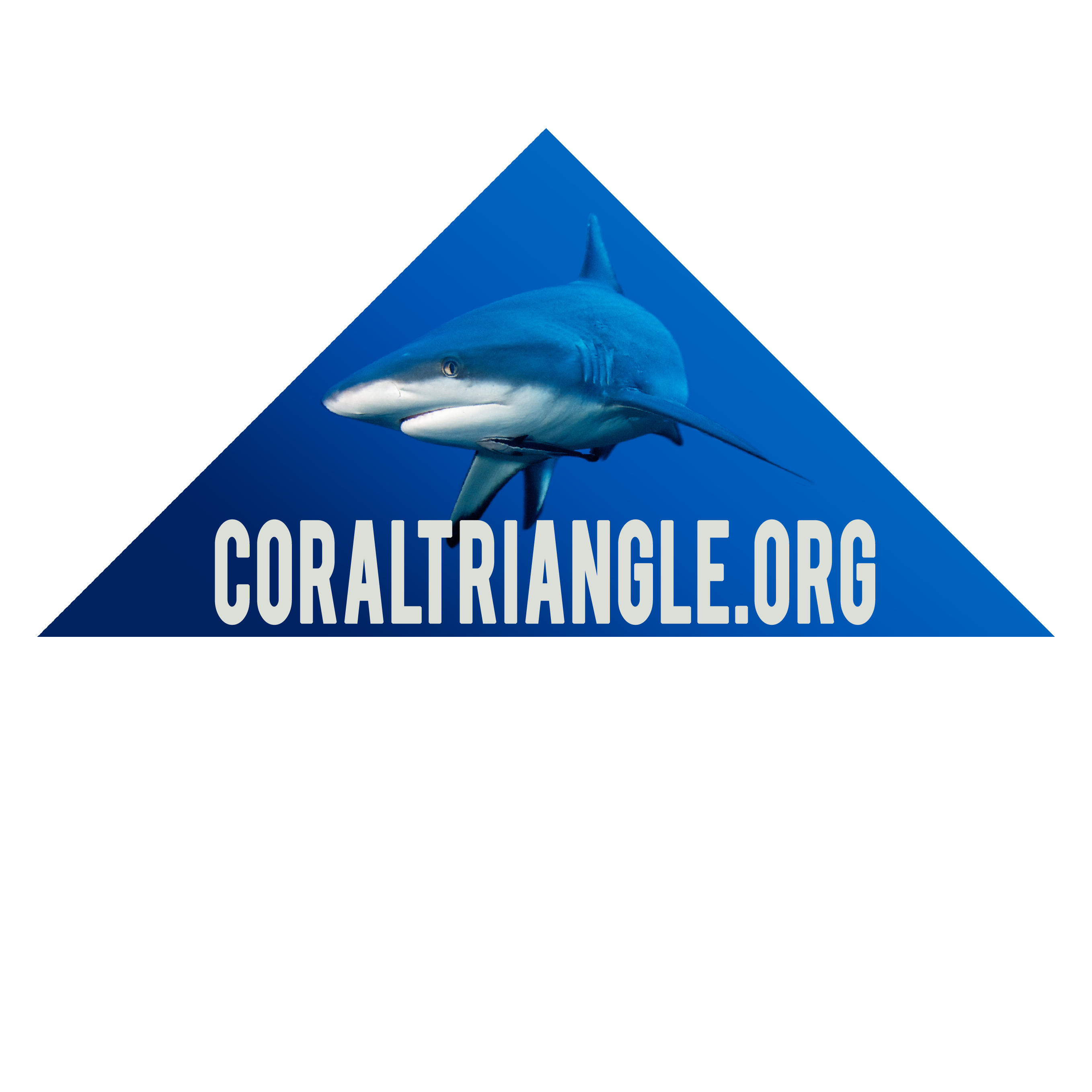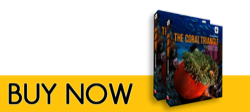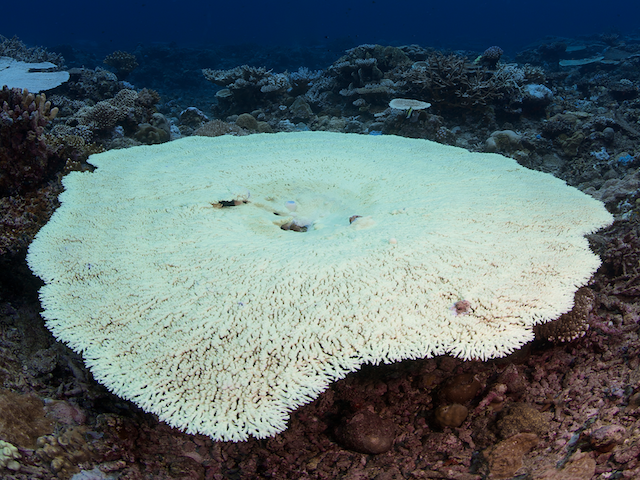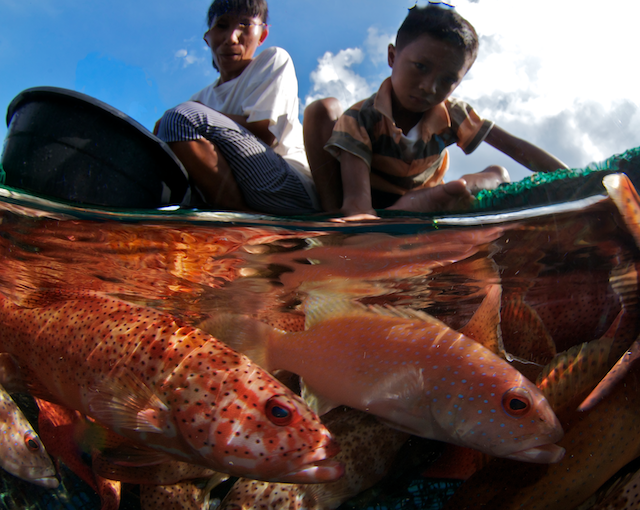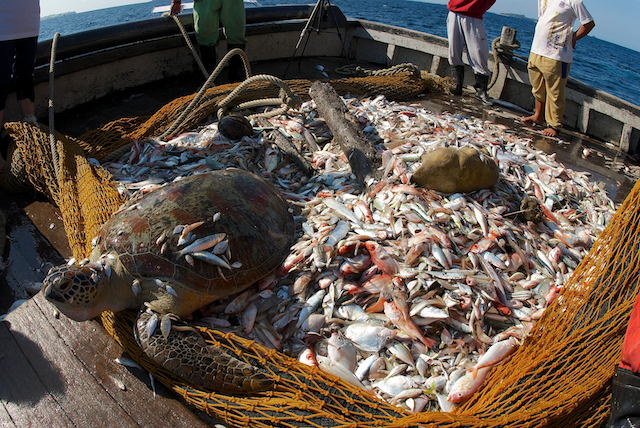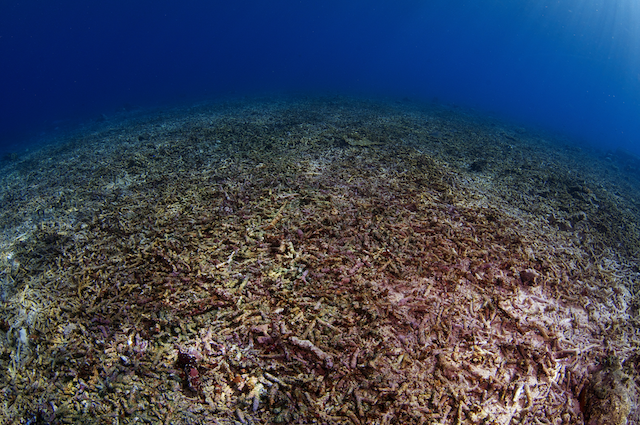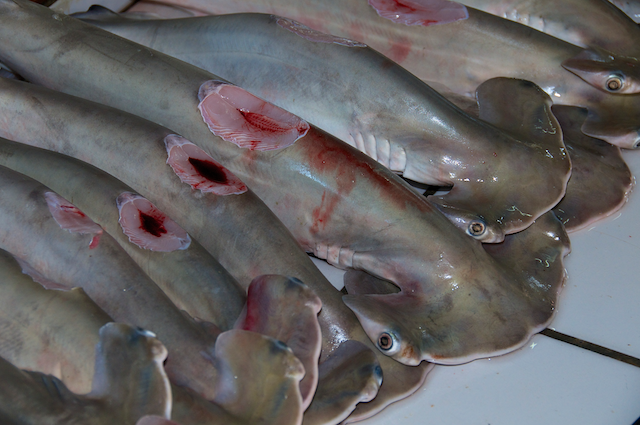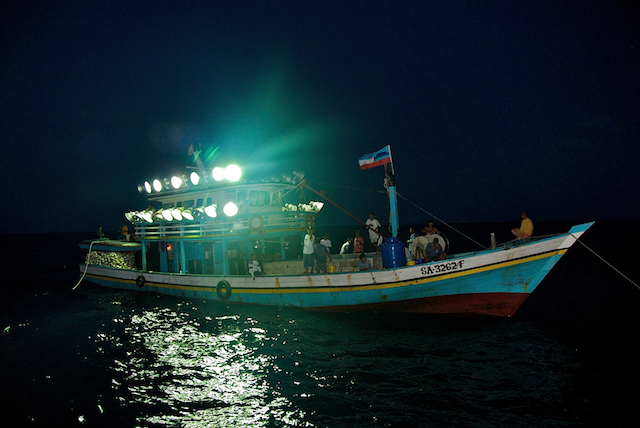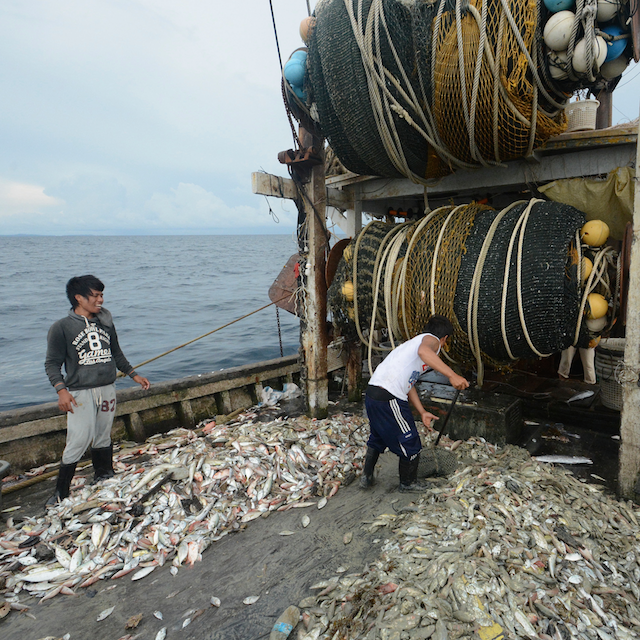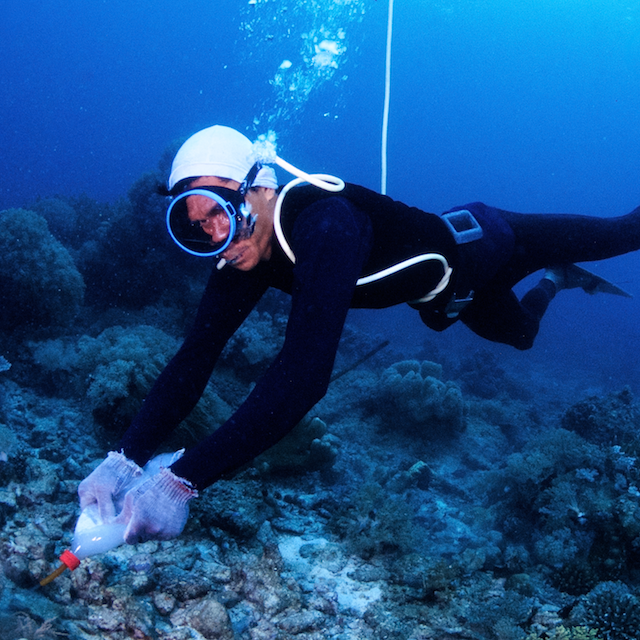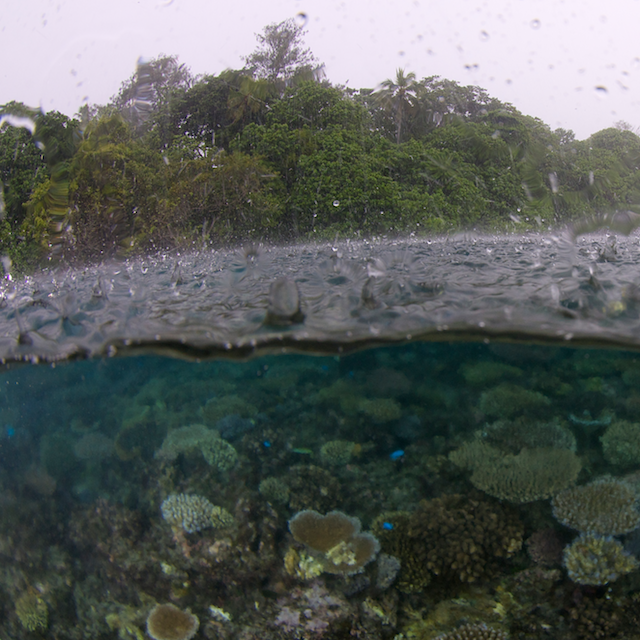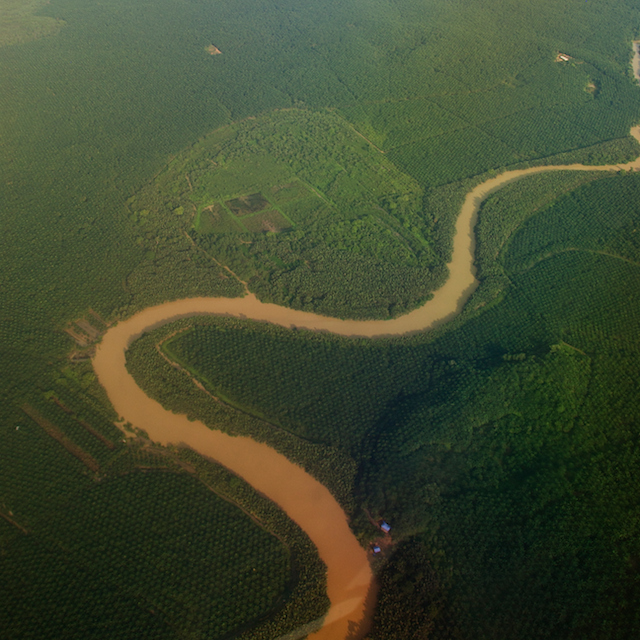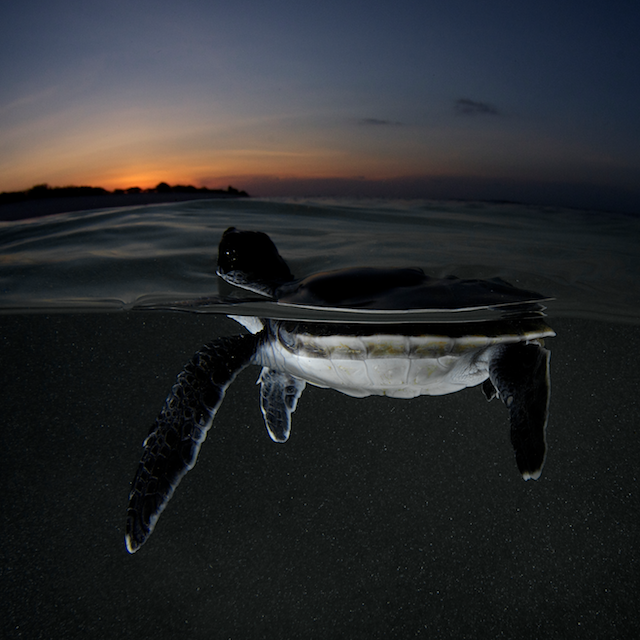Conservation in the Coral Triangle
There are many threats to the Coral Triangle. Overfishing, destructive fishing, pollution, and coastal development are all direct threats to the habitats and resources of the region. On top of those direct threats lie the ever increasing impacts of the changing climate. Climate change results in weakened coral reefs through bleaching and ocean acidification while increasing sea levels and storm frequencies threaten coastlines and coastal communities.
Overfishing is driven by extremely high population density, especially in the western Coral Triangle where even small islands are occupied. Coupled with large fleets of commercial trawlers and purse-seiners, there is strong evidence that many of the fisheries in the Coral Triangle are overfished or nearing their limits. Some fisheries, particularly for coral reef fish and sea cucumbers are well beyond their limits of sustainability. In some areas destructive practices employing explosives or poisons are devastating reefs.
The governments of the region, supported by non-governmental organisations, academia and some companies are working to improve resource management and protection. The 6 governments signed the Coral Triangle Initiative Regional Plan of Action in 2009. Together they have committed to conserving the regions marine wealth for sustainable use. This includes declaring more protected areas, particularly in important habitats. Existing protected areas must be better managed. Many are only “paper parks” without any real management on the ground.
To address issues with overfishing, the countries are turning to a new paradigm of management that shifts the focus of management from just the fish to include the environment that the fish live in and the fishers who target them. This new system, called ‘the ecosystem approach to fisheries management’ requires changes in the approach to fisheries management. The countries are also working to stop illegal, unreported, and unregulated fishing in the region.
Overfishing is driven by extremely high population density, especially in the western Coral Triangle where even small islands are occupied. Coupled with large fleets of commercial trawlers and purse-seiners, there is strong evidence that many of the fisheries in the Coral Triangle are overfished or nearing their limits. Some fisheries, particularly for coral reef fish and sea cucumbers are well beyond their limits of sustainability. In some areas destructive practices employing explosives or poisons are devastating reefs.
The governments of the region, supported by non-governmental organisations, academia and some companies are working to improve resource management and protection. The 6 governments signed the Coral Triangle Initiative Regional Plan of Action in 2009. Together they have committed to conserving the regions marine wealth for sustainable use. This includes declaring more protected areas, particularly in important habitats. Existing protected areas must be better managed. Many are only “paper parks” without any real management on the ground.
To address issues with overfishing, the countries are turning to a new paradigm of management that shifts the focus of management from just the fish to include the environment that the fish live in and the fishers who target them. This new system, called ‘the ecosystem approach to fisheries management’ requires changes in the approach to fisheries management. The countries are also working to stop illegal, unreported, and unregulated fishing in the region.
5 serious threats to the Coral Triangle
The one process now going on that will take millions of years to correct is the loss of genetic and species diversity by the destruction of natural habitats. This is the folly our descendants are least likely to forgive us.
E.O.Wilson
One of the biggest threats to the marine resources of the Coral Triangle is overfishing. Overfishing can be described as when fish populations are unable to replenish themselves because too many are caught. Overfishing is considered the most widespread local threat to coral reefs in the region.
Specific fisheries for groupers and wrasses, aquarium fish, and some invertebrates like sea cucumber are heavily exploited. Bottom-trawling, where nets are dragged across the sea floor to capture is still prevalent in many areas and demersal fish populations in heavily trawled regions have declined by as much as 95% since the 1960s.
Overfishing in the region is driven by the large and dense human populations that live in some areas as well as increased demand for seafood products from North America, Europe and East Asia. Tuna, shrimps, live reef fish, and more are just some of the products that move from the Coral Triangle around the world.
More information: World Resources Institute | Coastal Fisheries Programme | FAO-UN
Specific fisheries for groupers and wrasses, aquarium fish, and some invertebrates like sea cucumber are heavily exploited. Bottom-trawling, where nets are dragged across the sea floor to capture is still prevalent in many areas and demersal fish populations in heavily trawled regions have declined by as much as 95% since the 1960s.
Overfishing in the region is driven by the large and dense human populations that live in some areas as well as increased demand for seafood products from North America, Europe and East Asia. Tuna, shrimps, live reef fish, and more are just some of the products that move from the Coral Triangle around the world.
More information: World Resources Institute | Coastal Fisheries Programme | FAO-UN
Destructive fishing is a particular threat where the act of fishing actually destroys habitats and ecosystems on which the fish populations depend. Fishing using explosives (sometimes called bomb-, blast- or dynamite fishing), cyanide fishing and bottom trawling are the most widespread forms of destructive fishing in the Coral Triangle. Both bomb fishing and cyanide fishing are illegal throughout the Coral Triangle.
Bomb fishing originated with the use of unexploded WWII munitions and has grown into an industry that uses explosives fashioned from bottles and fertiliser. The bombs have rudimentary fuses and are thrown from a small boat onto a reef. The underwater explosion stuns and kills many fish in the vicinity. The bombs often explode close to the corals and blow up large areas of the reef. This kind of damage can take decades to recover. Bomb fishing is dangerous, every year many fishers get injured fabricating and using these illegal explosive devices.
Cyanide fishing is one kind of poison fishing employed in the region. Fishermen dive on a reef, often with a rudimentary diving hookah, with a squeeze-bottle full of sodium cyanide. When a target fish is spotted the poison is squirted into the reef where the fish is hiding and the fish is stunned. To retrieve the fish, corals are often broken and the poison can kill the corals where it was squirted.
More information: McClellan | Coral Reef Alliance | FAO-UN | WIAS | NDR Media | World Resources Institute | Scientific American
Bomb fishing originated with the use of unexploded WWII munitions and has grown into an industry that uses explosives fashioned from bottles and fertiliser. The bombs have rudimentary fuses and are thrown from a small boat onto a reef. The underwater explosion stuns and kills many fish in the vicinity. The bombs often explode close to the corals and blow up large areas of the reef. This kind of damage can take decades to recover. Bomb fishing is dangerous, every year many fishers get injured fabricating and using these illegal explosive devices.
Cyanide fishing is one kind of poison fishing employed in the region. Fishermen dive on a reef, often with a rudimentary diving hookah, with a squeeze-bottle full of sodium cyanide. When a target fish is spotted the poison is squirted into the reef where the fish is hiding and the fish is stunned. To retrieve the fish, corals are often broken and the poison can kill the corals where it was squirted.
More information: McClellan | Coral Reef Alliance | FAO-UN | WIAS | NDR Media | World Resources Institute | Scientific American
A changing climate is projected to have profound impacts on the Coral Triangle. Increased incidents of coral bleaching from elevated sea water temperatures threaten the future of reefs. The acidification of seawater threatens any organism that makes a calcium-carbonate-based shell including many molluscs, crustaceans and corals. More frequent and more powerful storms, combined with sea level rise, will change the shape of small islands and beaches and possible erode them away. Increased temperatures even influence the sex of baby turtles resulting in more females when nests are slightly warmer than usual. And human communities in the Coral Triangle, many of whom already live with very few resource, are particularly threatened by climate change as their ways of life and home islands are severely threatened.
More information: WWF
More information: WWF
Runoff from logging, agriculture, development and cities brings large amounts of sediment, fertilisers and chemicals to coastal areas. When land-based activities are conducted without regard to their potential impact they can be devastating. Poorly conducted logging and conversion to agriculture can result in tons of excess sediment washing down rivers where it eventually settles on coral reefs and smothers the corals.
Fertilisers and sewage from human settlements can cause a bloom of algae on the reef that outcompetes the corals and eventually can kill them.
Fertilisers and sewage from human settlements can cause a bloom of algae on the reef that outcompetes the corals and eventually can kill them.
All species of marine turtles in the Coral Triangle are threatened with extinction (there is a lack of data on the Flatback turtle). Their complex life histories expose them to many threats, including being caught inadvertently in fishing gear, hunted for their shells and meat, their eggs being dug up and consumed, or when their nesting beaches are degraded or destroyed.
Many other species in the Coral Triangle are threatened with extinction, including dugongs (threatened by hunting and loss of grazing grounds), seahorses (international trade in dried seahorses), many shark species, groupers and Humphead wrasse (Cheilinus undulatus).
More information: TRAFFIC
Many other species in the Coral Triangle are threatened with extinction, including dugongs (threatened by hunting and loss of grazing grounds), seahorses (international trade in dried seahorses), many shark species, groupers and Humphead wrasse (Cheilinus undulatus).
More information: TRAFFIC
Eric Madeja
WhatsApp: +60128382272
Skype: eric_madeja
Email me
